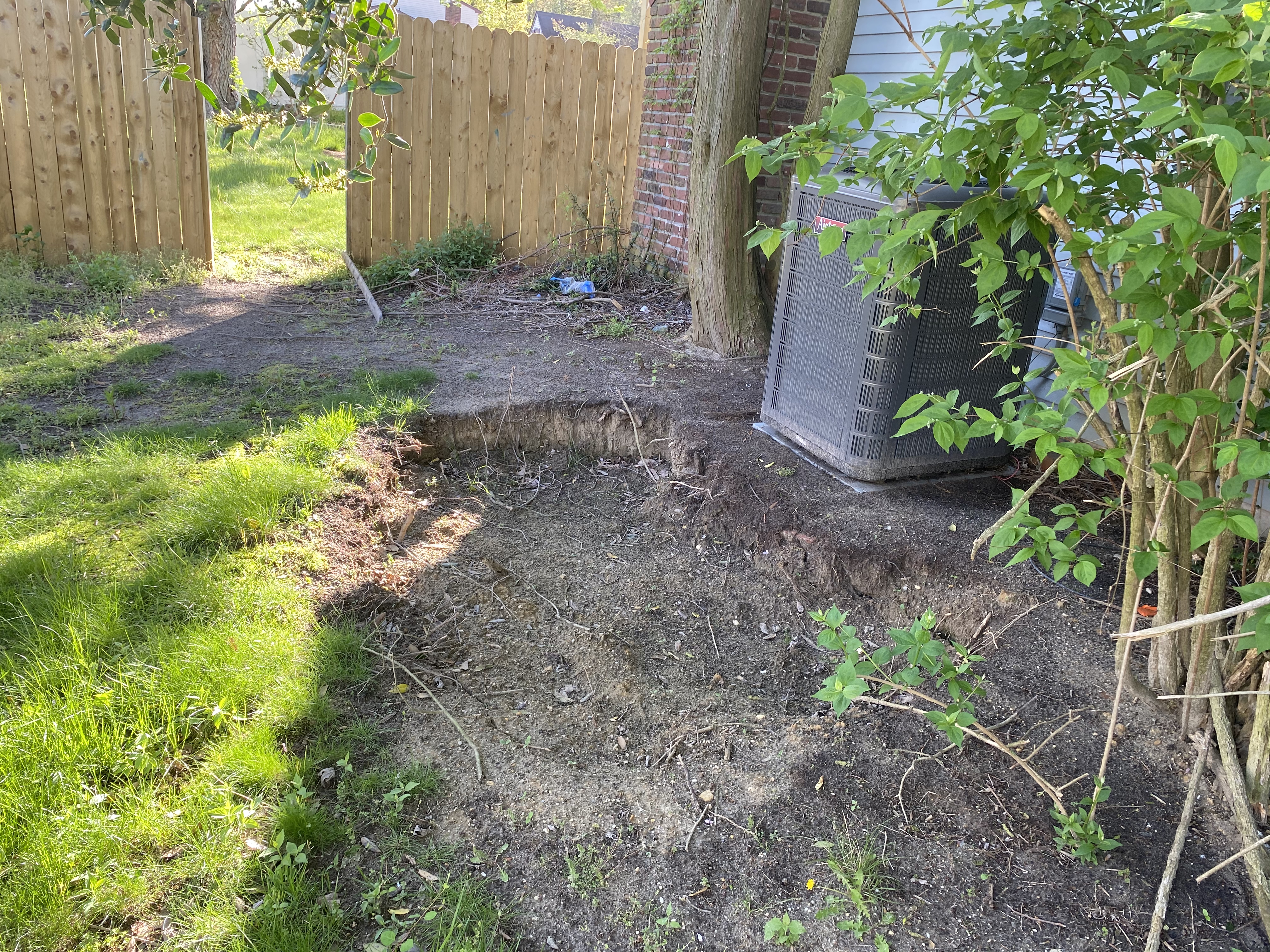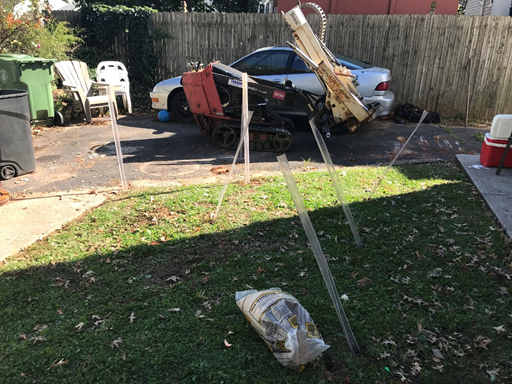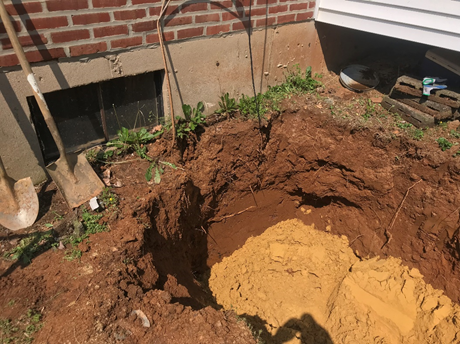The Problem with Removed Oil Tanks
Lets be real, the concern with a metal tank is it will wear out (rust never sleeps) and leak oil which triggers environmental regulations that the property owner must comply with. Compliance to address a tank leak cost thousands if not tens of thousands of dollars. For example this past month we were involved with remediating tank leaks and the different project costs varied between $5,700.00 and $65,000.00.
Important - Read about the ignored risk of removed tanks that buyers, realtors and possibly your attorney maybe missing.
What do you do when buying a property with a removed UST?
-
Your best and cheapest course of action is to get a copy of the tank testing and removal report from when the tank was removed. If the owner didn’t offer this from the start they may not have it, which is a problem as it may not exists. Many tanks get removed, that leaked and the issue gets brushed under the rug, so to speak.
-
I take a more conservative approach by saying assume the tank leaked until proven otherwise.
-
Maybe you have a copy of the tank removal permit and think all is good Please note that local inspection for any tank removal is meant to verify that the physical task was performed such as actually removing the tank. If the tank leaked, is not an aspect of this inspection and it should not be assumed that if a tank was removed and approved by the township, that a leak did not occur. The only way you know if a tank did not leak is by obtaining soil samples from the tank excavation either at time of removal or subsequently post removal. This testing along with a narrative from the firm performing the testing is the basis regarding if the tank did or did not leak. It is somewhat surprising that in today’s environmental that no testing is performed on some tank removal, but it is common when we review tank removal documentation is it sans laboratory testing.
Why would a removed oil tank be a concern?
-
The tank may have leaked but the leak was not reported.
-
The tank leaked & the owner did nothing.
-
People think they just have to say a tank was removed and it will stop any further investigation into the tank, in short, people want to downplay a potential problem
That's it, in a nutshell, the tank may have leaked and it wasn't public knowledge.
Fact: We investigate many removed tank areas and find contamination that must be remediated.

Understand that the key document you want for a property where a tank was removed from is a report that says "the removed oil tank did not leak, this was verified by soil laboratory analysis that indicated no oil was detected". Ok that is the short version but that is what you need.
I mean have you ever gone to a dentist and they didn't want an X-Ray, a doctor that didn't want testing. Why would you not want testing from a removed tank especially when the cleanup of a tank leak cost thousands of dollars?

We wanted to provide a few scenarios where property owners wanted to downplay an oil tank being an issue.
Case Study 1 We find a buried tank
Owner bought home in 2014, didn't do a tank sweep at that time. FYI we have been doing tank sweeps for over 20 years)
2021 Owner selling, buyer does a tank sweep, Curren finds evidence of a buried tank. We recommend excavation, owner refuses, buyer walks away. (The kicker the buyer was buying as is, their only concern was an oil tank which was a deal breaker if not addressed).
Owner angry that a legacy tank is on the property. This person goes so far as to find an old owner to admit that the house had oil heat and it was aboveground. They further profess to speak to neighbors that they removed aboveground tanks aka the neighborhood never had underground oil tanks.
Here is a kicker, we get an anonymous phone call from a person claiming to be doing historical research and wanted to know if a tank we removed (we remove thousands) down the street from this property was an AST or UST, (It was a UST) to try an create an argument that the neighborhood had ASTs.
This person also wanted to speculate that that buried tank was a septic tank.
Bottom Line #1
Seller lost another buyer some 45 days after the first, seller was unable to supply any documentation that the property had an AST and the buried tank was indeed not a tank. Curren removed the tank. The cost and if it leaked is not my point, my point is the extent people will go though to deny and avoid having to address an oil tank.
Case Study 2 Seller says tank was removed
Property for sale, no disclosure of an oil tank, home buyer get a home inspection, inspector notes evidence of prior oil heat. Owner suddenly remembers that a tank was removed. There is no report of the tank removal so on one knows if the tank leaked. Step 1 is to do a tank sweep as many properties actually had two tanks, so we scan the property and find an oil tank. Now owner recalls that maybe the tank was filled in place.
Bottom Line #2
Here is another case where an owner denies any knowledge of a tank until they are confronted with a professionals opinion (Curren's) that a tank is present.
Again the removal and remediation cost isn't relevant, the point is each person is responsible to look out for their own best interests.
Case Study 3 Buyer does a tank sweep, Evidence of a removed Tank
Here we go again, owner says no knowledge of oil heat (owned property for 21 years). We find clear evidence from the tank sweep that an oil tank was removed. Now we have to push the buyer to do soil borings and testing of where we believe a tank was removed.
Long and short of it, we find soil contamination (oil). So we have a situation where owner denies any knowledge of oil heat, husband is now blamed because he handled things and he is dead.
Bottom Line #3
Buyer walks, but waits on the sidelines, owner hires Curren to address the contamination from an oil tank that was never there.
Case Study 4 Seller says an oil tank was removed
Seller admits that a tank was removed (Good memories and honesty is refreshing) but has zero documents saying the tank didn't leak. Curren is hired to test the area where the tank was removed from so it can be proven that the tank didn't leak (many people call this a certification which it isn't).
So we ask where was the tank, "oh its on the left side of the house". We go to drill the borings at the property and the left side seems really unlikely to be the location of the removed tank. The right side, well that's where the ac unit is located and the heater and the ground is depressed from what would appear to Curren an excavation of a removed object.
The photo below is the right side of house where it really looks like something was removed.

Bottom Line #4
We drill on the right side of the property and find contamination. The left side was clean, thank god.
Again we have an owner not being 100% helpful in addressing concerns that the removed oil tank didn't leak. Anyway we found contamination and cleanup is necessary. The cost to address the problem is being paid by the seller, but it could have been the buyer in all of these situations, If the buyer didn't do their own evaluation.
What happens if there is no report of the removed oil tank?Assume the tank leaked until proven otherwise.
Our recommendation is to have the area of the tank tested, clearly you need documentation from the owner regarding the EXACT location. For your reference, a 500 gallon tank has a footprint of 4’ by 5’5” which is a small target area to pinpoint exactly. A 290 gallon tank is even smaller.

You are more likely to find the general area where the tank was removed from and will have to drill a larger area to attempt to find the removed tank location. By gridding out the borings you will increase your likelihood of hitting the tank location, as the borings can be evaluated for the backfill utilized to fill the removed tank excavations.
The photo below shows a removed tank excavation and the difference in soil color pertaining to the soil used to backfill the void of the removed UST. It is this area that you are looking for when drilling to find and test a removed tank location.

